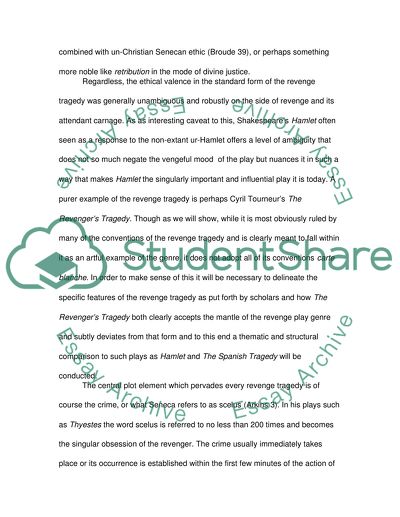Cite this document
(The Revengers Tragedy and the Revenge Play Genre Coursework, n.d.)
The Revengers Tragedy and the Revenge Play Genre Coursework. Retrieved from https://studentshare.org/literature/1547464-what-are-the-major-conventions-of-revenge-tragedy-discuss-how-they-are-used-combined-or-altered-in-cyril-tourneurs-the-revengers-tragedy
The Revengers Tragedy and the Revenge Play Genre Coursework. Retrieved from https://studentshare.org/literature/1547464-what-are-the-major-conventions-of-revenge-tragedy-discuss-how-they-are-used-combined-or-altered-in-cyril-tourneurs-the-revengers-tragedy
(The Revengers Tragedy and the Revenge Play Genre Coursework)
The Revengers Tragedy and the Revenge Play Genre Coursework. https://studentshare.org/literature/1547464-what-are-the-major-conventions-of-revenge-tragedy-discuss-how-they-are-used-combined-or-altered-in-cyril-tourneurs-the-revengers-tragedy.
The Revengers Tragedy and the Revenge Play Genre Coursework. https://studentshare.org/literature/1547464-what-are-the-major-conventions-of-revenge-tragedy-discuss-how-they-are-used-combined-or-altered-in-cyril-tourneurs-the-revengers-tragedy.
“The Revengers Tragedy and the Revenge Play Genre Coursework”. https://studentshare.org/literature/1547464-what-are-the-major-conventions-of-revenge-tragedy-discuss-how-they-are-used-combined-or-altered-in-cyril-tourneurs-the-revengers-tragedy.


